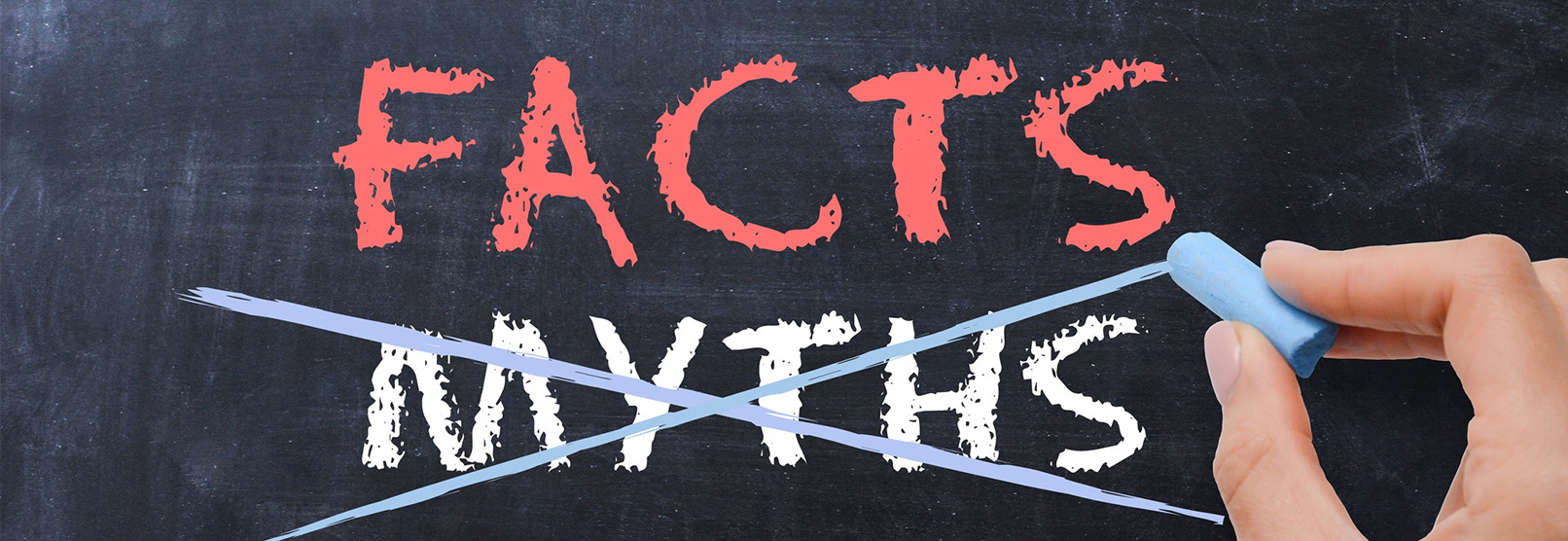
In this article we demystify some misconceptions being circulated about trading and investing in the forex, futures, and stock market.

The trading and investing delusions you should rid your mind of
There are so many false and wrong ideas being circulated about trading forex, futures, and stocks. These ideas are usually not just held by the general public but also by newbies and aspiring traders and investors. One of the major disasters of having the wrong mindset is that it dramatically decreases your chances of becoming consistently profitable and it will bring you so much damage in the overall sense. The whole image of trading forex, futures and stocks are also significantly tainted in the sight of the general public, whose only opinion about trading was constructed from wrong information that is being spread by the ignorant and unlearned but also deliberately by the media (which we will address in an upcoming article).
In this article, we, as an online trading academy will be dispelling the most common trading misconceptions that have been set up and make you understand why these aren’t true. There are ten major ones we will be dealing with.
Each trading delusion or misconception will be accompanied by a “reality check,” and we hope that after this you can now have a better and more grounded opportunity to educate yourself about trading and investing in the forex, futures and stock market.
Misconception: Trading is all about making quick money.
- Reality Check: Trading is about preserving money; you must learn to do that first before you can make money.
This is perhaps the most vastly publicized delusion of all, and this is why a more significant population of people decided to start trading forex, futures, and stocks. They want to make fast cash and live life on the edge like the movies portray. When new traders start, and they have the wrong expectations, the reality check comes in rather quickly when they begin to lose several trades, and they then understand that it’s time to recalibrate their minds. Warren Buffett once popularly stated that the first rule in trading is to “never lose money.” Also, the second: Never ignore rule 1.
Of course, he’s right and here is why: Trading and investing is firstly about preserving your capital and managing it wisely much more than it is about multiplying it. To make money from trades, you have to be able to manage and control risk at an extremely high level. For you to be able to maximize the real opportunities in the forex, futures and stocks market, you have to resist the temptation of chasing every move in the market as this will help you keep your capital intact for the right moves.One of the hardest battles you’ll have to fight as a trader is the one in your mind, and as we know, the conquering of self is not an easy task. Until you conquer yourself and you can face off with temptation without giving in, you’ll likely not make any money from trading because you’ll end up making the wrong decisions. Once you’ve succeeded in training and conquering your mind, only then can you preserve your capital and make money work for you.
Misconception: You need to be a top-class math wizard, Wall Street genius to be a successful trader.
- Reality Check: You don’t need to have a super brain or be unbelievably smart; trading is as much skill as driving a car.
You don’t require a college degree or a super analytical mind to be a successful forex, futures and stock trader. Being overly analytical can come in as a negative attribute sometimes when trading because you’ll end up over-analyzing traders until the opportunity passes you by.
What you need to trade is an even mix of gut and analysis. Your stomach will inform you when a trade “feels good,” but your analytical mind does the impending risk calculation and Supply and Demand analysis. Only when these two are in total and absolute agreement with a trade, you do go ahead with it.
Successful traders are masters of themselves not super smart mathematical wizards. You need to be disciplined enough to ignore market noise and distractions. No matter the degrees and super brain you might possess, if you enter every trade that looks good without your Supply and Demand analysis and proper risk management abilities, you’ll end up losing money in the long run.
Misconception: All professional traders are day traders, and they stare at charts for many hours a day.
- Reality Check: Once well trained and you have a process in place, you need 2-4 hours a week to trade.
Trading and investing are all about identifying Supply and Demand imbalances and proper mentoring. At our online trading academy, our students have been trained to scan charts in less than 5 minutes. Considering we don’t trade everything that comes our way, we do not have to stare at charts all day long.
When you enter high-quality Supply and Demand trades after proper evaluation, there is nothing else to do by staring at the charts, except you have supernatural abilities to make the charts go where you want. In case you don’t have that ability, you would only be wasting time staring at the charts continuously.
If you are thinking you should be looking for more trading opportunities, that might not be the best idea because you shouldn’t trade everything you see on the charts. Once you scan the charts and see which ones fit into your predetermined Supply and Demand criteria, then you can place your trade. You should note that with proper training you can figure out the right trades in just minutes. If the price is close to high-quality Supply and Demand zones, you can place your S.E.T. (stop, entry, target) in advance, or if the price is not close to high-quality Supply and Demand zones yet, there is the option of placing alerts and going about more productive activities. For both scenarios, we can use our “set and forget and get a life” strategy.
Misconception: You need a huge amount of money to stand any chance at trading successfully in the market.
- Reality Check: You don’t have to have a lot of money to start. A good trader can make money regardless of their available capital.
People don’t seem to understand that the same level of skills and mental fortitude you need to handle a small account is the same you would need to manage a large account. If you start with a large account without proper skills and training, you’ll end up losing all the money you started with. We are not denying the fact that having much money to trade with can help you earn faster, but if you are not well trained, you will also lose the money at the same rapid rate. Even if you possess much money to trade with, it is advisable to start small, this way you can practice and build your consistency over some time without risking all your capital. When you have started winning on the small account, you can now deposit more and increase your capital.
If you have successfully managed a small account, increasing your capital will only make your profit skyrocket.
Misconception: You need to win most of your trades to make a profit.
- Reality Check: All you have to do is optimize your wins and make them work in your favor. It is all about your average risk to rewards ratio!
You have to understand and digest specific facts about trading forex, futures, and stocks. For example, the phenomenon called risk to reward ratio: this will help you reduce the effects your losses have on you in general. It is impossible for you to win all your trades. Well-groomed and experienced traders can win close to 50 to 60% of their trades, and with the right measures in place, this equals to an enormous yearly turn over. Let’s create the analogy of an average 1:3 risk to reward ratio; this simply means for every 1 dollar you lose; your wins would be 3 dollars. For the sake of this analogy, you only need between 27% to 35% of your trades to make a profit, and this applies if your risk to reward ratio is 1:3 or 1:2.
If you have mastered trading enough to win 40 to 50% of your trades, then that’s a whole lot of turnover yearly.
Misconception: Trading robots are the new solution to all trading problems.
- Reality Check: Robots do not have the needed intelligence to trade successfully.
For you to know this is not true, look at the top 10 most successful traders and investors you know. How many of them use this robot? Taking shortcuts will only get you cut short in any endeavor in life. These big shots have developed their minds over time and have learned what works and what doesn’t. This is how they win, not by using some software that was programmed by folks who have little to zero trading knowledge and skills. You also need to understand that the market is not static, it is continuously evolving and changing, and it takes real human intelligence to analyze these changes and make the right decisions based on Supply and Demand imbalances. If trading were as easy as just installing software, then everyone would be billionaires already.
Misconception: You can only make money in a stable market.
- Reality Check: If you know how to trade with Supply and Demand, any state the market is in would be fine by you.
As a trader, you must be skilled in trading Supply and Demand, and once this is achieved, any market is okay for you to trade because you will be able to study the charts and know when it is suitable to trade. When you are well vast in Supply and Demand, you can trade both the trending market and the sideways market.
There might be times when you anticipate a trend reversal; at this point, you use price action skills to balance it out.
Misconception: Day trading is the fastest way to generate income and get your dream life.
- Reality Check: Day trading will probably cause you to lose money faster than a trip to a Vegas casino while drunk.
Day trading is the same as trading shorter timeframes, and while this might seem like more opportunities to trade, it is only just more chances to lose money and get yourself stressed out. It is trading the monthly, weekly and daily charts which are referred to as higher timeframes. These type of trades reduces the amount of time and mental stress involved in day trading. After setting up your trades, it requires slight involvement and no need to stare at the charts all day. Again, we practice and live by “set and forget and get a life.”
Misconception: I can’t use wide stops because I don’t have much money.
- Reality Check: Money does not affect your ability to place wide stops which are what you need.
There is something called position sizing, and you must understand this before you start trading forex, futures, and stocks. When you are placing your stop loss for a trade, you have to consider the best stop loss for the particular trade you choose to take.
If all you want to risk per trade is USD 30, all you have to do is readjust your position size.
Misconception: I heard trading is like gambling.
- Reality Check: It could be only if you want it to be.
Comparing trading to gambling is an insult and misrepresentation of trading. Trading forex, futures stocks is based on Supply and Demand imbalances in the marketplace and requires a lot of proper training and practice unlike gambling when you can simply put money in and hope for the best. Trading and investing are all about resource preservation and handling risk the proper way. Your level of skill decides if you become a consistently profitable trader. It is quite possible for you to gamble in the market if you decide to, but that is not the proper disposition to have towards trading. Traders that are consistently profitable treat trading and investing like the highly respected profession that it is!
Gambling is quite unpredictable, and there is close to nothing you can do to improve your odds, but that is not the case in trading. As a trader, getting the proper training will put you at a great advantage. No skill can improve your odds at a Bellagio slot machine, the chances of you winning remains very slim, but as a skilled trader, you can easily win 35% to 60% of your trades and use risk to reward to maximize your profits.
In our online trading academy, we instill these right principles and behaviors into our students to prepare them to be disciplined and to become consistently profitable traders and investors in the forex, futures and stock market.
If you want to learn more about professional trading and investing across multiple asset classes such as forex, futures, and stocks, please sign up HERE for free at our online trading academy www.onlinetradingcampus.com and get access to a free three-hour introductory course.
Happy trading!
Author Bio: Bernd Skorupinski teaches the undiluted truth about trading and investing at Online Trading Campus and takes you through what it takes to be a consistently successful trader. His favorite moment as a trading mentor is the way peoples’ eyes light up with excitement and confidence when they understand how Supply and Demand trading strategy works and how it can help win in the trading arena. He believes in building core values and discipline that ensures his students do not succumb to the pressures and temptations of the market. He very much believes in following plans and strategy through. If you want to know more about the author Bernd Skorupinski please read HERE





